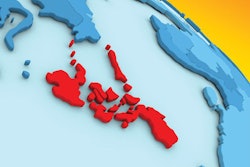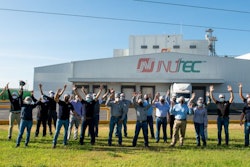
It’s become almost an axiom that pet food closely follows human food, especially in terms of trends. Unfortunately, that’s also true when it comes to prices: Even though the overall consumer price index (CPI) for the U.S. declined in July 2022, to 8.5% from 9.1% in June, both human food (or “food at home”) and pet food inflation continued to rise.
U.S. pet food inflation reached 10.9% in July, up from its previous high of 10.3% in June 2022. Similarly, food at home hit 13.1% in July, surpassing its June figure of 12.2%. (All rates represent year-over-year periods and come courtesy of compilation and analysis by John Gibbons at PetBusinessProfessor.com.) Driven at least partially by the higher pet food prices, inflation for the entire pet category, what Gibbons calls “petflation,” increased to 9.1% in July from 8.8% in June.
Tracking pet food and other inflation before COVID-19
As pet food prices keep rising, it means that, compared to pre-pandemic times, when pet food was actually in a deflationary period, the sector’s inflation has grown 11% since July 2019. That’s below the overall pet industry, at 12.9% since 2019.
Food at home has seen the worse inflation since 2019: a whopping 21.4%, compared to 15.5% for the overall CPI. In this context, pet food’s inflation doesn’t seem quite as bad; but when you consider the higher prices pet owners are paying on top of those historically high human food prices, it adds up to a lot of financial pain for a lot of people.
Light at the end of the tunnel?
There is a silver lining in this picture: Many categories tracked in the CPI declined in July, including within the food at home category. “Only two of nine categories had increases over 1% from last month, down radically from five in March,” Gibbons wrote. “With the slight drop in the national CPI vs last month, there is hope for the future.”
In that vein, some food commodity prices are falling worldwide, according to FoodIngredientsFirst.com. “Inflated food costs are abating across the board, driven by the downfall of vegetable oil prices and a considerable drop in cereal costs,” wrote Marc Cervera on the site, noting that the resumption of grain shipments out of Ukraine is helping. He quoted Maximo Torero, chief economist of the Food and Agriculture Organization of the United Nations (FAO), who said the decline in prices is welcome, though there are still many concerns.
“However, many uncertainties remain, including high fertilizer prices that can impact future production prospects and farmers’ livelihoods, a bleak global economic outlook and currency movements, all of which pose serious strains for global food security,” Torero said.
Indeed, despite Cervera’s and Torero’s positive outlooks, European Central Bank data for the European Union (EU) show the region’s overall inflation—presented as the “harmonised index of consumer prices,” or HICP—rose to 8.9% in July, up from 8.6% in June. For pet food and supplies (reported as one product category), the July rate hit 9.5%, up significantly from 8.8% in June. And, as in the U.S., food prices in the EU continue to climb and outpace those for the total economy, with inflation for that category at 11.8% in July versus 10.7% in June.
It's understandable that, as the world continues to contend with inflation, war, supply chain disruptions, a pandemic and so many other challenges, experts and media are looking for bright spots on the horizon. Sadly, the data show we’re not out of the woods yet and likely won’t be for the near to mid-term future.
















